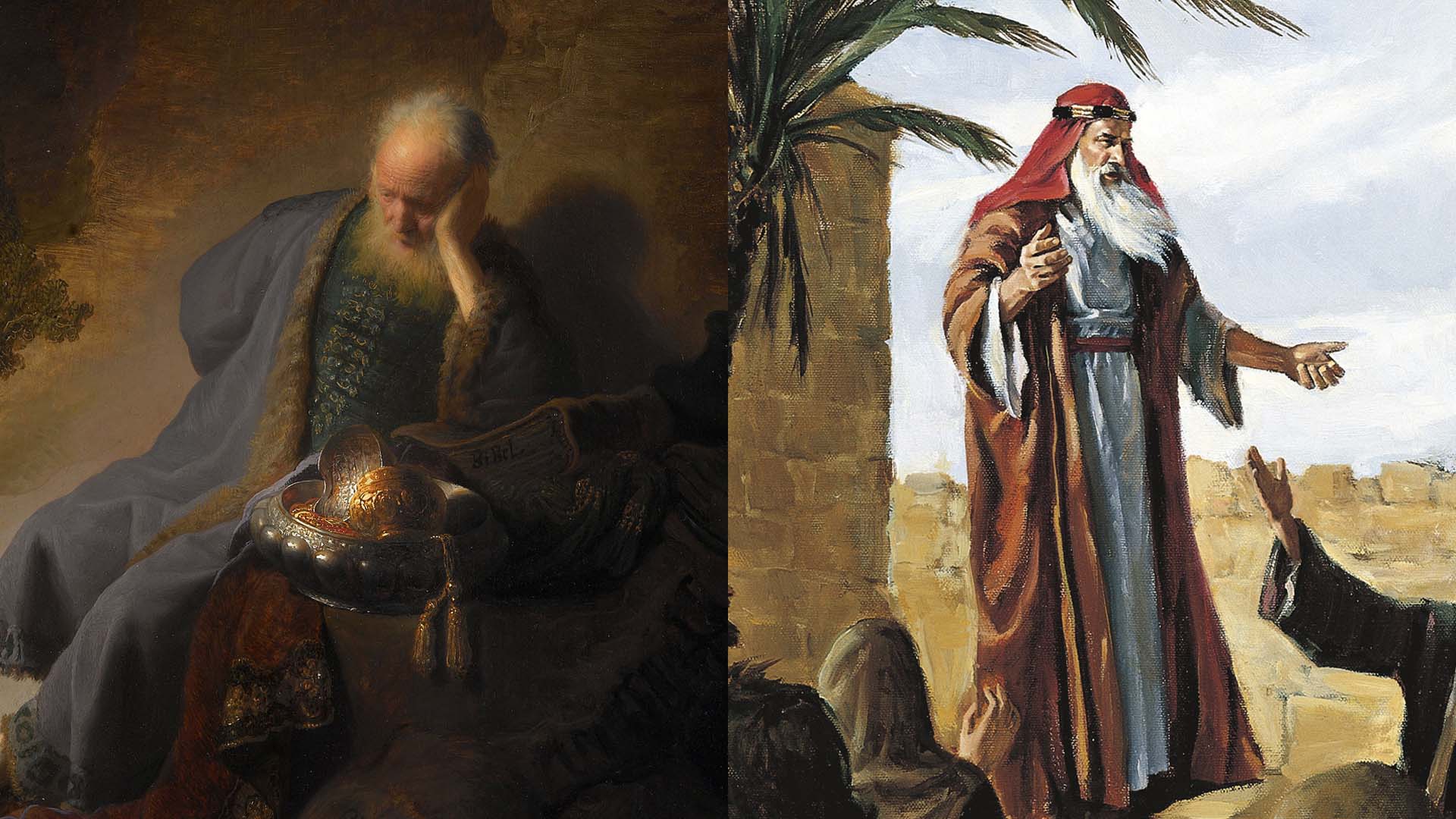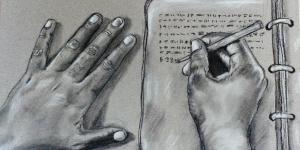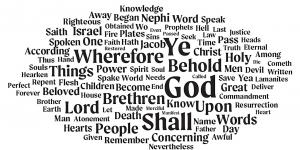You are here
How Did Jeremiah’s and Lehi’s Ministries Reflect One Another?

1 Nephi 1:4
The Know
According to Nephi, “in the commencement of the first year of the reign of Zedekiah, king of Judah … there came many prophets, prophesying unto the people that they must repent, or the great city Jerusalem must be destroyed” (1 Nephi 1:4). Significantly, this is the very picture that the Bible paints of this time period, as Jeremiah, Zephaniah, Habakkuk, Urijah, the prophetess Huldah, and others prophesying and preaching were all contemporaries of Lehi.1
Of these prophets who preached in the final years leading up until the exile, Jeremiah left the most extensive and detailed writings about what Jerusalem was like at that time. Nephi emphasized that he couldn’t “make a full account of the things which my father hath written,” (1 Nephi 1:16),2 but the book of Jeremiah helps fill in many of the gaps left in Nephi’s account. Studying writings and ministries of Lehi and Jeremiah together can therefore “foster a greater appreciation for these prophets and help illuminate the message they proclaimed.”3
According to Joseph Smith, both Lehi and Jeremiah would have held the Melchizedek Priesthood, allowing each to minister the ordinances of that priesthood despite their different genealogies.4 Furthermore, both prophets are explicitly connected with the act of record keeping. In Jeremiah 36, the Lord instructed Jeremiah to “write … all the words that I have spoken unto thee” for the purpose that the Israelites might repent (Jeremiah 36:2–3). Lehi likewise kept a record of “many things which he saw in visions and in dreams; and he also hath written many things which he prophesied and spake unto his children” (1 Nephi 1:16).5 Later Nephite prophets followed this pattern with the express hope that the Nephites and Lamanites might repent (cf. Moroni 1:4; Enos 1:13).
Because of the wickedness of the people, both prophets were rejected and suffered intense persecution. Yet, despite their trials both also witnessed the “tender mercies of the Lord.” As Lehi prophesied to the people, they “sought his life, that they might take it away” (1 Nephi 1:20). Such a danger was real—the prophet Urijah had earlier been executed by King Jehoiakim for the same teachings (see Jeremiah 26:20–23). Lehi was spared, however, and led to a new land of promise. Jeremiah was blessed by the Lord in a different manner: although he was imprisoned at least once, he was spared from Babylonian captivity.6
The ministries (and accounts) of both Lehi and Jeremiah also began with a divine call and commission from the Lord. Such a call and commission of the prophet culminated in the prophet’s admission to the Lord’s presence and His Divine Council. In 1 Nephi 1 and Jeremiah 1, Lehi and Jeremiah both saw the Lord, spoke with Him face-to-face, and received their prophetic call as a fulfillment of this prophetic requirement. Jeremiah reflected on this experience later in his ministry, especially when comparing himself to the false prophets who had neither “stood in the counsel of the Lord” nor “perceived and heard his word” (Jeremiah 23:18).7
As true prophets who had each been admitted into this Divine Council, both Lehi and Jeremiah prophesied of similar events. David and Jo Ann Seely have identified four themes common to Lehi’s and Jeremiah’s prophecies—namely, “[1] repentance and the impending destruction and exile by the Babylonians; [2] the coming of the Messiah; [3] the future scattering and gathering of Israel; and [4] the eventual restoration of the gospel in the latter days.”8
Unfortunately, the people did not repent and Jerusalem was destroyed, fulfilling Lehi’s and Jeremiah’s prophetic warnings.9 Such a tragic event was not without hope, though. Both prophets foresaw the Messiah’s ministry. The Book of Mormon specifically relates that “the Son of God [would] come, according to [Jeremiah’s] prophecy” (Helaman 8:20).10 Ultimately, the gathering of scattered Israel would be commenced for the final time as the Lord restored the gospel in the latter days. Both Lehi and Jeremiah left writings looking forward to this day: “Lehi, a descendant of Joseph, founded the people that would author the Book of Mormon.”11 Similarly, a series of passages from Jeremiah was applied by Moroni to the work Joseph Smith would perform, according to Oliver Cowdery.12
The Why
Both the Bible and the Book of Mormon testify that multiple prophets ministered to the people of Jerusalem in the years preceding the Babylonian exile. In so doing, both books of scripture provide additional and compelling witnesses of the ancient prophecies regarding the Messiah and events yet to be fulfilled.
Lehi and Jeremiah lived drastically different lives. As has been noted by David and Jo Ann Seely, much of these prophets’ ministries and lives mirror one another in ways to speak to a wider audience in Jerusalem.13 This included the manner in which Jeremiah and Lehi would experience the tender mercies of the Lord—while Jeremiah was commanded to stay in Jerusalem where he would survive the Babylonian assault, Lehi was commanded to leave Jerusalem to spare his life from the inhabitants of the city itself. Despite the differences in their lives and ministries, both Lehi and Jeremiah served as two witnesses to establish every word of the Lord (see 2 Corinthians 13:1).
As Latter-day Saints continue to study the lives and ministries of these two profoundly important prophets, they can better understand and appreciate what each prophet went through to share their messages of hope for Israel in a future day. Study of these prophets can also further deepen our understanding and love for Jesus Christ, who had called them to testify of Him and His redeeming, sanctifying, and cleansing role as the Savior of the world and His continued efforts to gather Israel today.
Further Reading
David Rolph Seely and Jo Ann H. Seely, “Lehi and Jeremiah: Prophets, Priests, and Patriarchs,” in Glimpses of Lehi’s Jerusalem, ed. John W. Welch, David Rolph Seely, and Jo Ann H. Seely (Provo, UT: Foundation for Ancient Research and Mormon Studies, 2004), 357–380.
Kevin L. Tolley, “To ‘See and Hear,’” Interpreter: A Journal of Latter-day Saint Faith and Scholarship 18 (2016): 139–158.
Book of Mormon Central, “Why Did the Lord Allow Jerusalem to Be Destroyed? (1 Nephi 17:43),” KnoWhy 637 (July 12, 2022).
Keith H. Meservy, “Jerusalem at the Time of Lehi and Jeremiah,” Ensign, January 1988, 22–25.
- 1. See Book of Mormon Central, “Who Were the ‘Many Prophets’ in Jerusalem During Lehi’s Time? (1 Nephi 1:4),” KnoWhy 441 (June 14, 2018).
- 2. Perhaps the book of Lehi, lost in the 116 pages, contained a fair amount of information about Jeremiah, who was obviously known to Lehi and Nephi. See 1 Nephi 7:14.
- 3. Seely and Seely, “Lehi and Jeremiah,” 359.
- 4. Jeremiah was a descendant of the priest Abiathar, making him eligible for the Levitical Priesthood by bloodline. Lehi, however, was a descendant of Manasseh. According to Joseph Smith, “All the Prophets had the Melchizedeck Priesthood.” Lineage, then, was not a determinant in either prophet’s ability to faithfully serve and minister in the Priesthood. “Discourse, 5 January 1841, as Reported by William Clayton,” p. 5, The Joseph Smith Papers.
- 5. Jeremiah and Lehi also kept additional copies of their prophetic writings. Jeremiah and his scribe, Baruch, rewrote the same prophecies and “many like words” following the destruction of his first scroll of prophecies by King Jehoiakim (Jeremiah 36:32). According to Seely and Seely, “Lehi and Jeremiah,” 366, this event “may have provided the impetus for the keeper of the record on the brass plates to acquire a copy of the prophecies of Jeremiah.” This may also be reflected in the Hebrew word delet that appears in Jeremiah 36:23. Although the King James Version translates this word as “leaves,” other scholars, including Hugh Nibley, have proposed that this word should be understood as referring to tablets, which may have been made of brass. See Hugh Nibley, “Two Shots in the Dark,” in Book of Mormon Authorship: New Light on Ancient Origins, ed. Noel B. Reynolds (Provo, UT: FARMS, 1982), 104–106, republished in Hugh Nibley, The Prophetic Book of Mormon (Provo, UT: Foundation for Ancient Research and Mormon Studies / Salt Lake City, UT: Deseret Book, 1989), 384–386; William J. Hamblin, “Sacred Writing on Metal Plates in the Ancient Mediterranean,” FARMS Review 19, no. 1 (2007): 45–46, 53–54; H. Curtis Wright, Modern Presentism and Ancient Metallic Epigraphy (Salt Lake City, UT: Wings of Fire Press, 2006), 38–54.
- 6. For more on Jeremiah’s imprisonment, see Book of Mormon Central, “How Could Nephi Have Known about Jeremiah’s Imprisonment? (1 Nephi 7:14),” KnoWhy 463 (August 30, 2018).
- 7. See Kevin L. Tolley, “To ‘See and Hear,’” Interpreter: A Journal of Latter-day Saint Faith and Scholarship 18 (2016): 139–158, for more on how Lehi’s and Nephi’s accounts of experiences with the Divine Council were influenced by Jeremiah.
- 8. Seely and Seely, “Lehi and Jeremiah,” 373.
- 9. See Book of Mormon Central, “Why Did the Lord Allow Jerusalem to Be Destroyed? (1 Nephi 17:43),” KnoWhy 637 (July 12, 2022).
- 10. Early traditions also link Jeremiah with explicit Christological prophecies. See John A. Tvedtnes, “Jeremiah's Prophecies of Jesus Christ,” in The Most Correct Book: Insights from a Book of Mormon Scholar (Salt Lake City, UT: Cornerstone Publishing, 1999), 99–103.
- 11. Seely and Seely, “Lehi and Jeremiah,” 377.
- 12. The passages Oliver Cowdery cites include Jeremiah 16:16; 30:18–21; 31:1, 6, 8, 27–28, 32–33; and 50:4–5. His account of this event can be found in the Messenger and Advocate 1, no. 5 (1835): 78–80; Messenger and Advocate 1, no. 7 (1835): 108–112; and Messenger and Advocate 1, no. 10 (1835): 156–159. A discussion of these passages can be found in Kent P. Jackson, “The Appearance of Moroni to Joseph Smith (JS—H 27–49),” in Studies in Scripture: Volume Two: The Pearl of Great Price, ed. Robert L. Millet and Kent P. Jackson (Salt Lake City, UT: Randall Book, 1985), 339–366.
- 13. See Seely and Seely, “Lehi and Jeremiah,” 359–361.
KnoWhy Citation
Related KnoWhys
Subscribe
Get the latest updates on Book of Mormon topics and research for free





